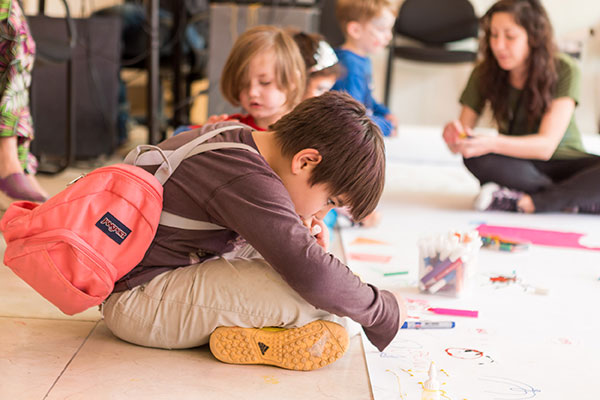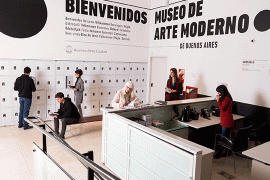2025
Bilingual Spanish-English edition
Textss: Gonzalo Aguilar, Fernando García, Gabriela Gugliottella, David Lamelas, Victoria Lescano, Pino Monkes, Victoria Noorthoorn, Patricio Orellana, Isabel Plante, Soledad Sobrino
Translations: Ian Barnett
Graphic Disegn: Pablo Alarcón
–
272 pages
Format: 25x 19,7cm
ISBN 978-987-673-638-1
–
Dalila Puzzovio is one of the key artists involved in the emergence of Pop Art in Argentina. She was a leading figure at a time when the boundaries between art, fashion, design and theatre blurred, allowing the movement to pervade all spaces, mix with everyday life, and the invention of one’s own personality to become an aesthetic manifesto. With artworks such as her celebrated 15-centimetre platform shoes, Puzzovio is a quintessential figure of that transformation. However, she also makes it clear that behind the superficial pleasure of pop’s frivolous imagery a darkness always lurks, as an intrinsic condition for that same newly-born youthful freedom. This book brings together an unprecedented collection of documentary material, along with critical essays from noteworthy specialists, a detailed chronology and a dossier that illustrates the carefree nature of Puzzovio and her husband, artist Charlie Squirru, between the 1960s and 1970s.
‘Dalila Puzzovio: Autorretrato [Dalila Puzzovio: Self-Portrait] is a well-earned retrospective that brings together original works, reconstructions and documents from a career spanning more than sixty years. It aims not only to recognise a key career in the history of Argentinian art but to underscore the significance of Dalila Puzzovio’s stunning interventions: the way her gestures, questions and strategies still resonate in the art of the present. Her work with the body, with the expansion of its boundaries and hence its possibilities; her pioneering attention to the design of exhibition spaces, challenging their limits and logic through resonance with spaces of everyday life; her playful sign-posting of the by then definitive knotting together of art, fashion, marketing and the media; her reflections on the openings and ceilings that this ‘knottedness’ implied for women within the changing discursive and institutional apparatus of art; her investigations of the complex affective dynamics people engage in with art, the media, clothing and other consumer goods: these are all inescapable issues raised by Dalila since her emergence in the 1960s, issues whose relevance persists in the practices of today’s artists. ’
Patricio Orellana
‘What happened in the space of just two years? How can we understand the passage from the mortuary and the catastrophic, with its traditional emblems of funeral wreaths and hospital plastercasts, to the festive and supposedly frivolous world of her intervention at the Di Tella? Could it be that, just as Dalila changed her name (she was still ‘Delia’ in the 1965 catalogue), she also decided to slough off a sombre past constructed of damaged if not dead bodies? Or is there rather, as I will try to show, a continuity rooted in an intimate, full-blooded nexus of death, fashion and pop that found in Dalila – in her work but also her figure as an artist – the most precise artistic seismograph of the upheavals of particularly troubled times?’
Gonzalo Aguilar
‘The epicentre of pop art in Buenos Aires was known as the ‘Manzana loca’ [‘Crazy Block’]. It comprised a central area of the city that was home to the Lirolay and Bonino art galleries, the galleries of the Torcuato Di Tella Institute, at 940 Florida Street, some bars like El Moderno or El Bárbaro and the stores of the Galería del Este. Between 1960 and even after the closure of the Di Tella’s galleries in 1970, Dalila frequented all these spaces of socialising, consumption and entertainment. Throughout that decade, she directed her artistic activities towards a variety of initiatives ranging from Informalist paintings to the ‘Art of Things’. Later, she ventured into making what today we call ‘installations’ and launched into collaborative projects outside the walls of the art gallery. These included the design of clothes and costumes to oxygenate both the young ‘look’ and the theatre and film scenes.’
Isabel Plante
‘Dalila had been Delia until Charlie insisted otherwise: she had to be called ‘Dalila’ [Delilah] like the biblical character that had acquired a new meaning for them when Cecil B. de Mille brought the legend to Hollywood, with the Austrian actor Hedy Lamarr playing the woman who, in the Old Testament, the Philistines used to coax the secret of Samson’s magic strength out of him.’
Fernando García
‘I asked her about the craze for platforms, which that year – 2010 – had invaded the streets and shoe-store windows of Buenos Aires like democratic trainers. She had no hesitation: ‘The avant-garde lies in platform shoes. Other forms of heels seem to have disappeared, and we’re coming back to these incredible objects of desire with unstable surfaces. These objects that give us a glimpse of uncertain futures while preparing us spiritually to reinvent paths bursting with colour.’
Victoria Lescano







